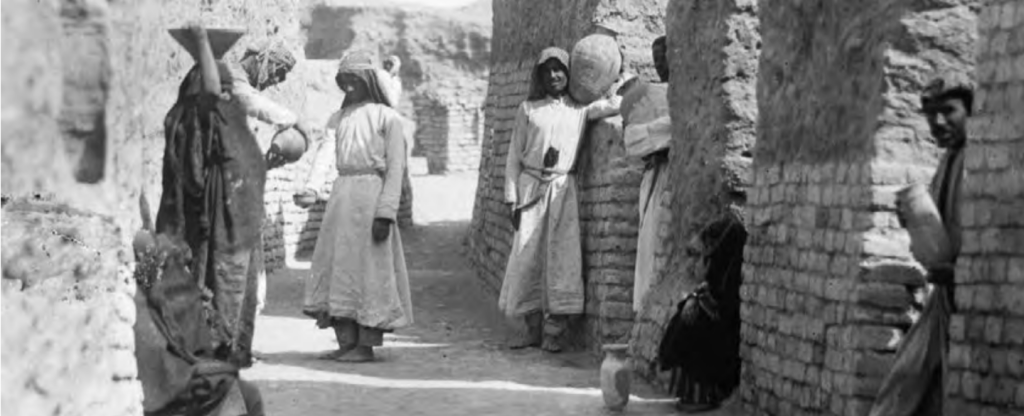
Woolley’s workers at Ur. Photograph reproduced courtesy of the British Museum.
Near Eastern Archaeology Vol. 79, No. 4, Decemberarticle, “Archaeology Returns to Ur: A New Dialog with Old Houses,” by Elizabeth C. Stone (Stony Brook University) and Paul Zimansky (Stony Brook University).
More than eighty years after Woolley’s departure, the authors have initiated excavations in Mesopotamia’s most celebrated residential district, Ur’s Area AH. Did private housing change significantly as Ur went from the capital of a bureaucratic empire under its Third Dynasty to a city-state in the Isin-Larsa period? The authors opened four areas, two within Woolley’s excavations and two just outside of them. In the former, there was a great deal more Isin-Larsa material to be excavated than Woolley’s reports suggested. Architecture north of AH was very well-preserved and offered spaces in which Ur III materials can be accessed easily in coming seasons. The fourth excavation area, to the southwest of Area AH, revealed architecture of a different character, perhaps of the Old Babylonian period, lying at a lower elevation than the nearby “House of Abraham,” suggesting that the Isin-Larsa architecture of AH was built on a hill.
